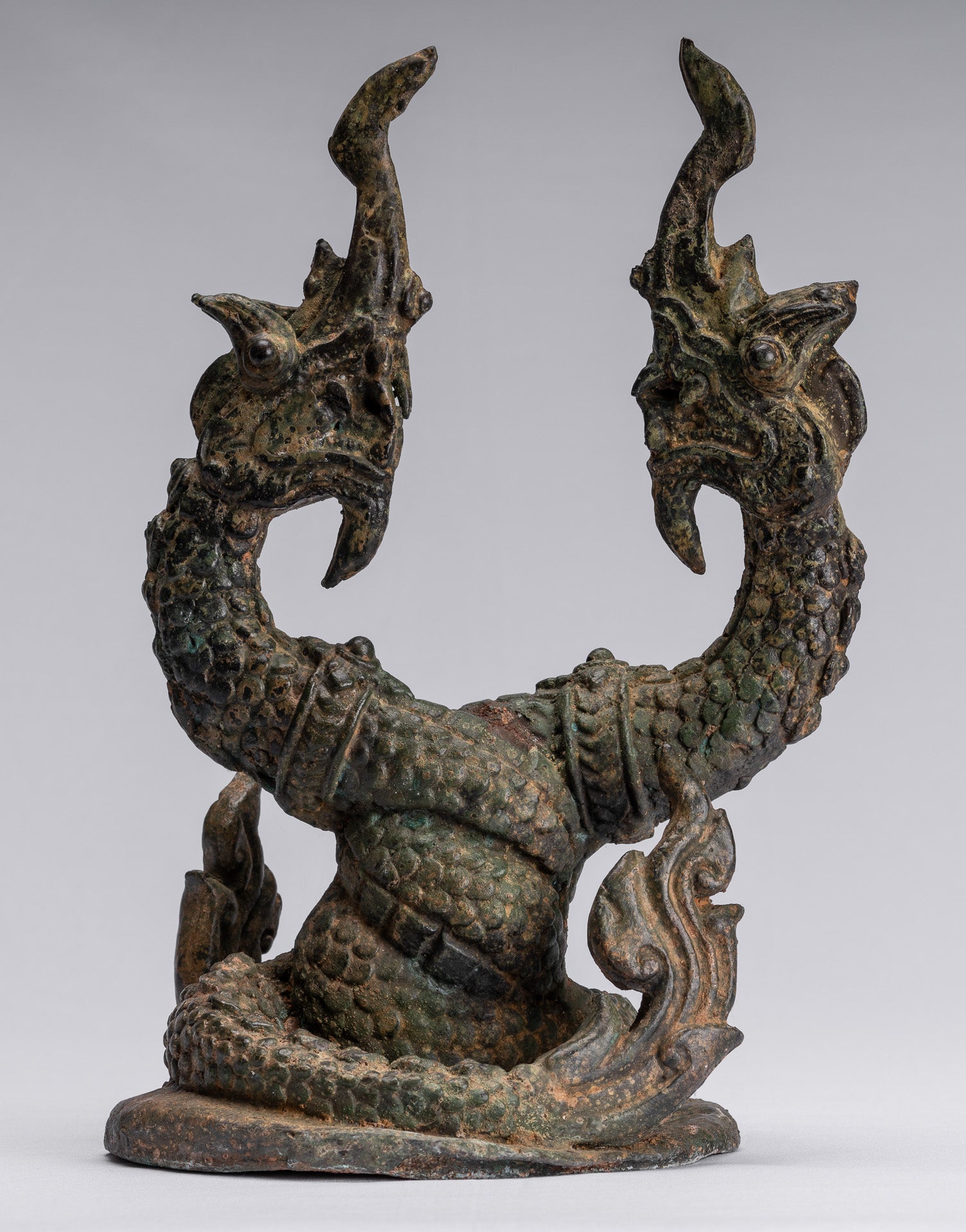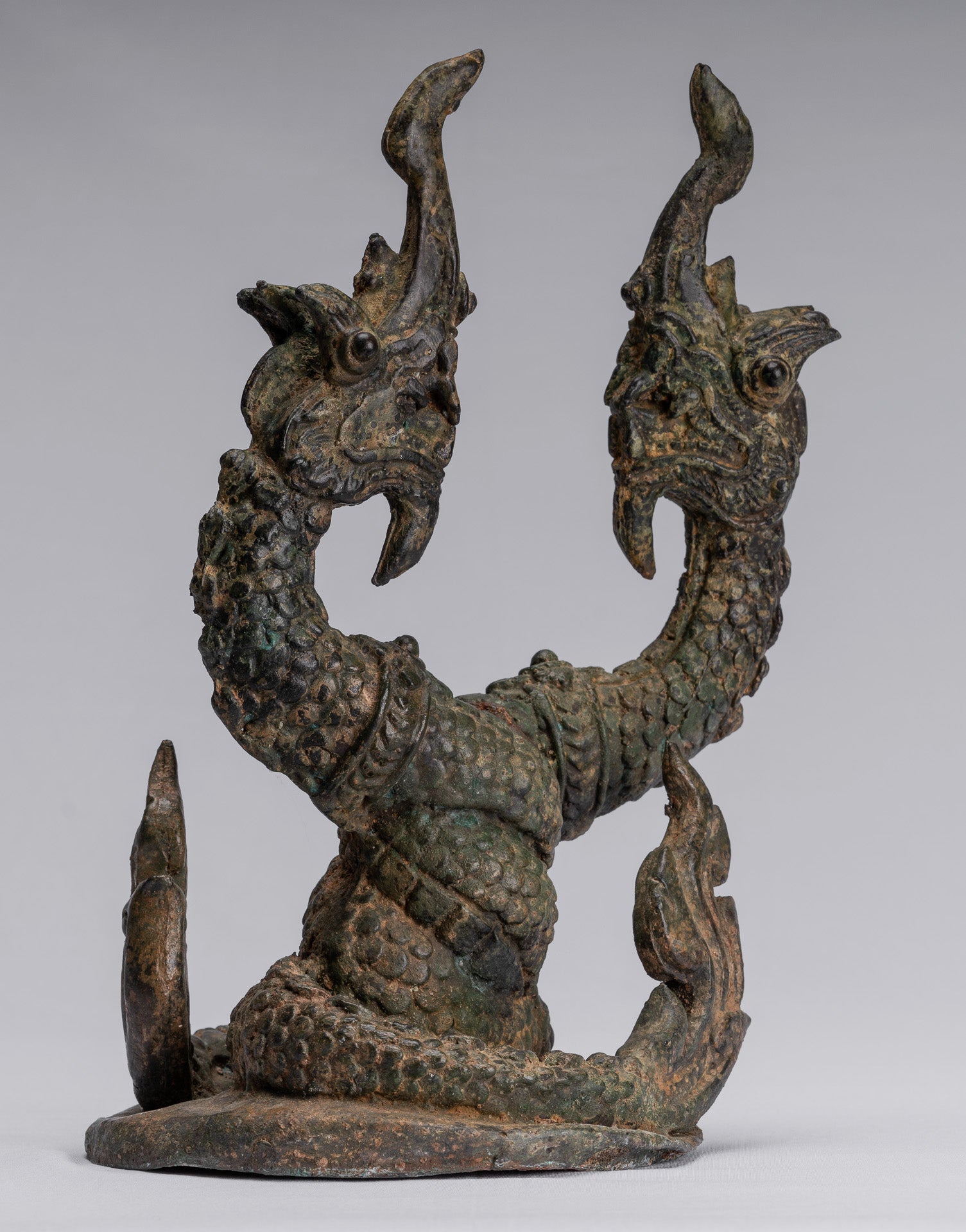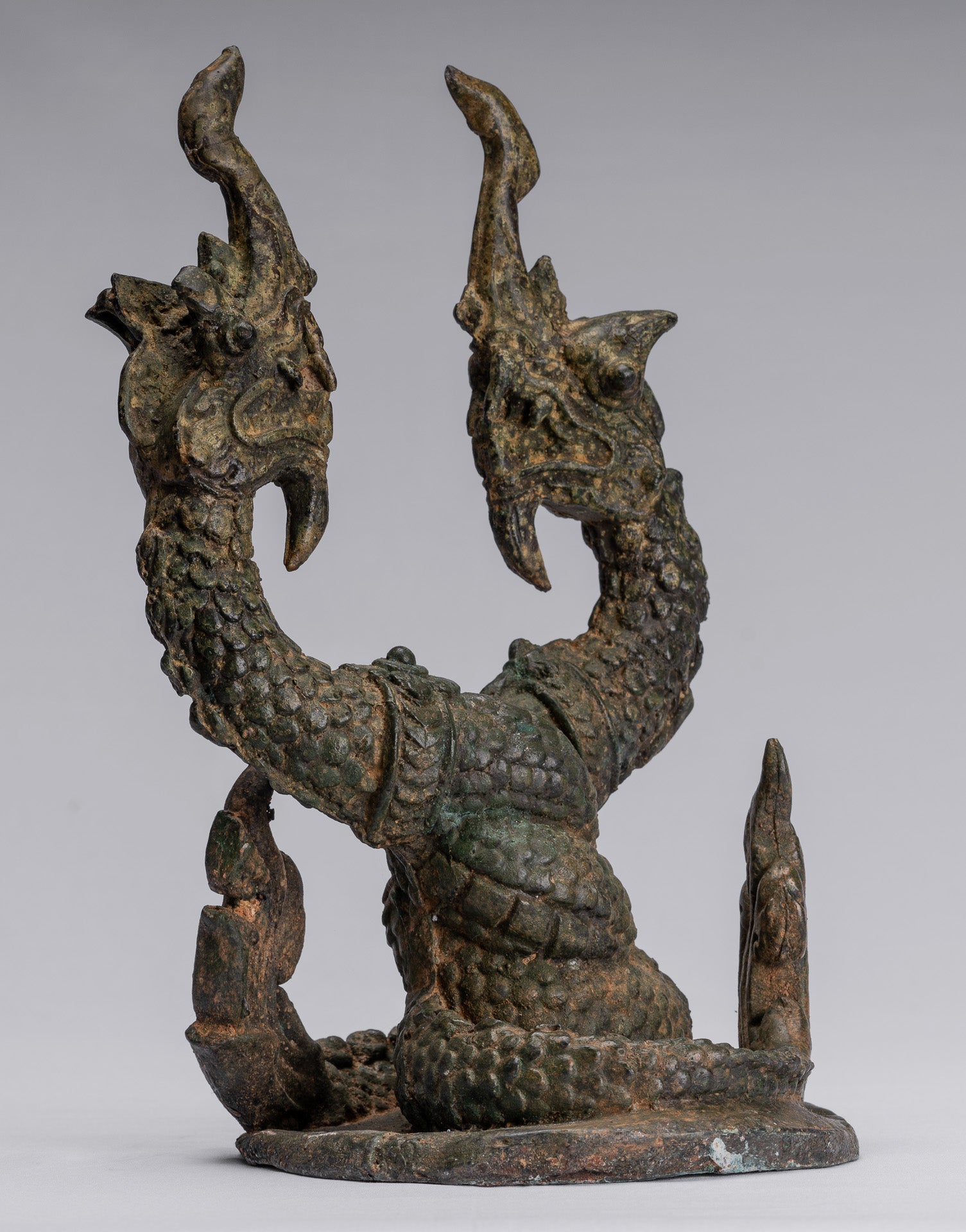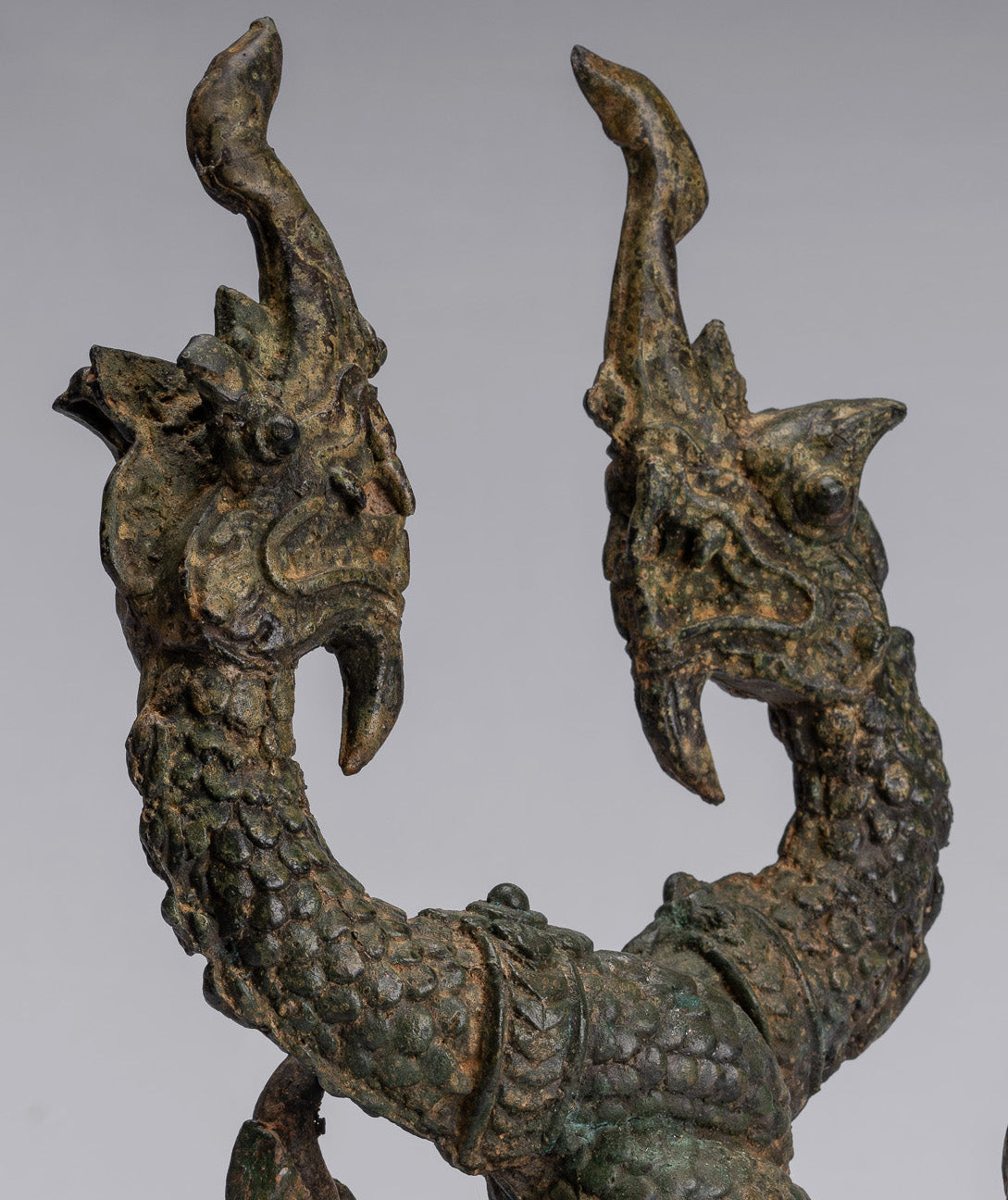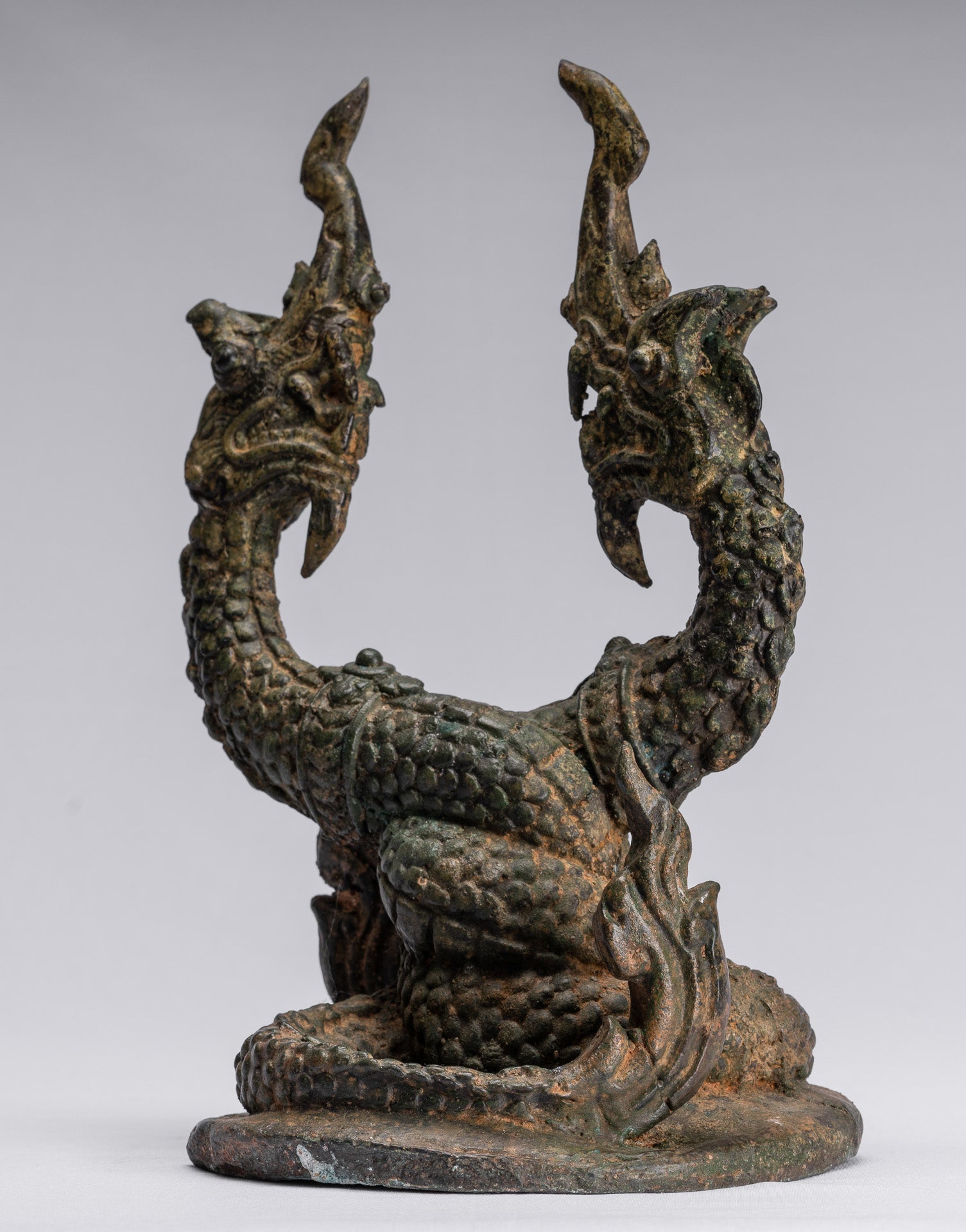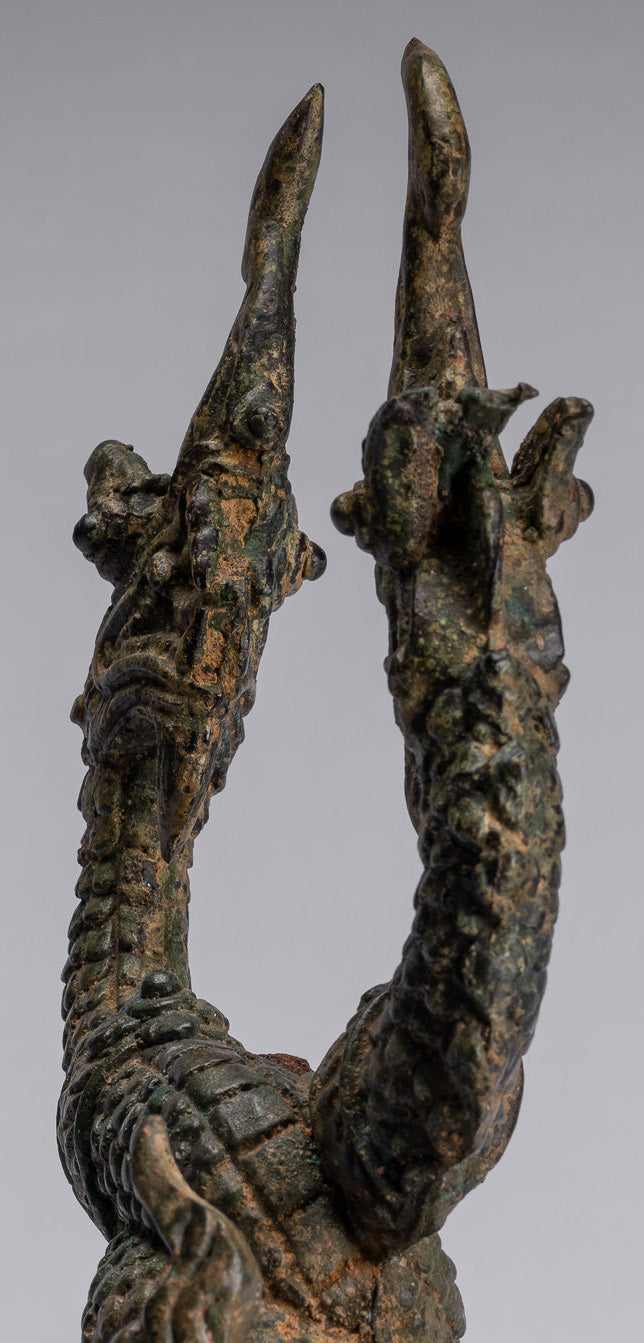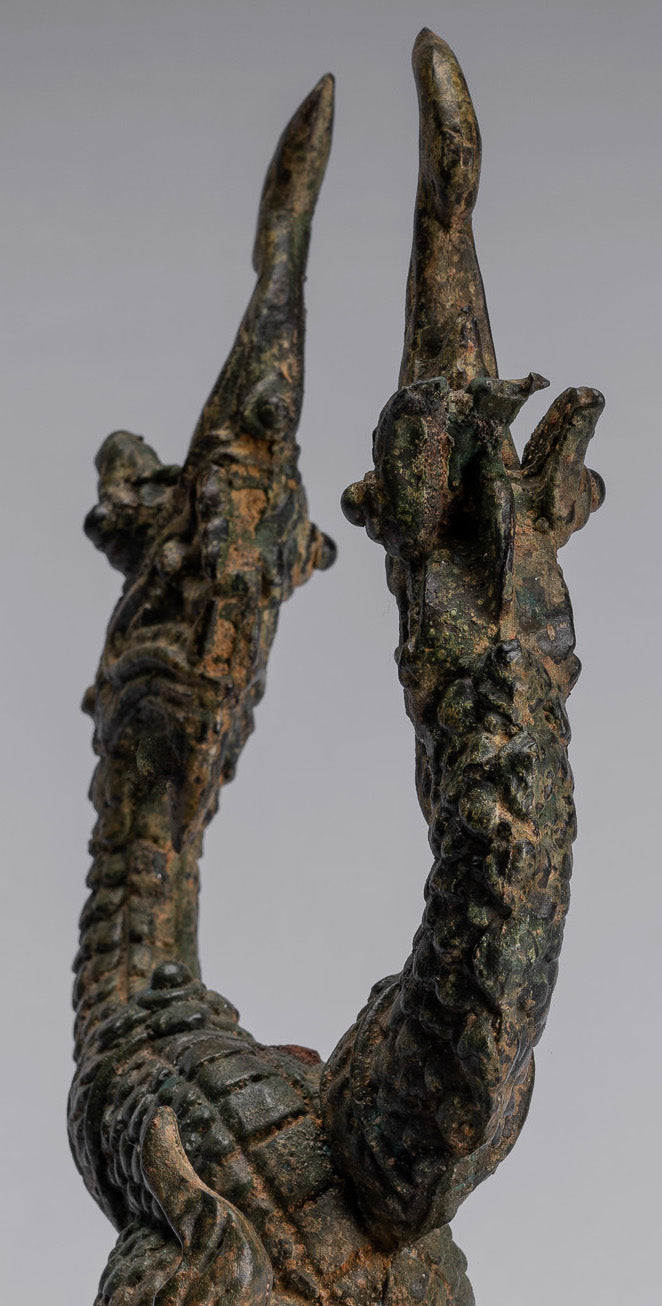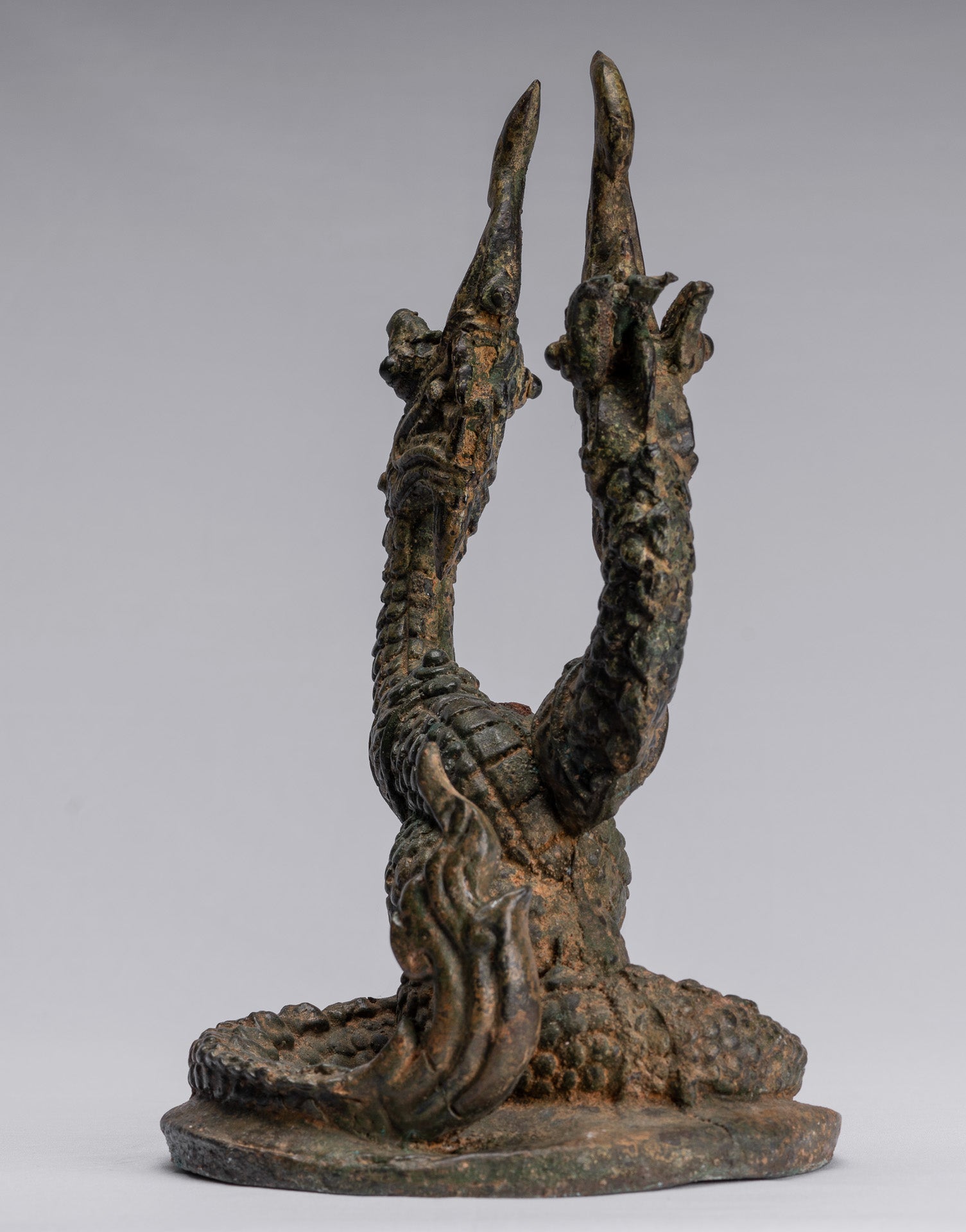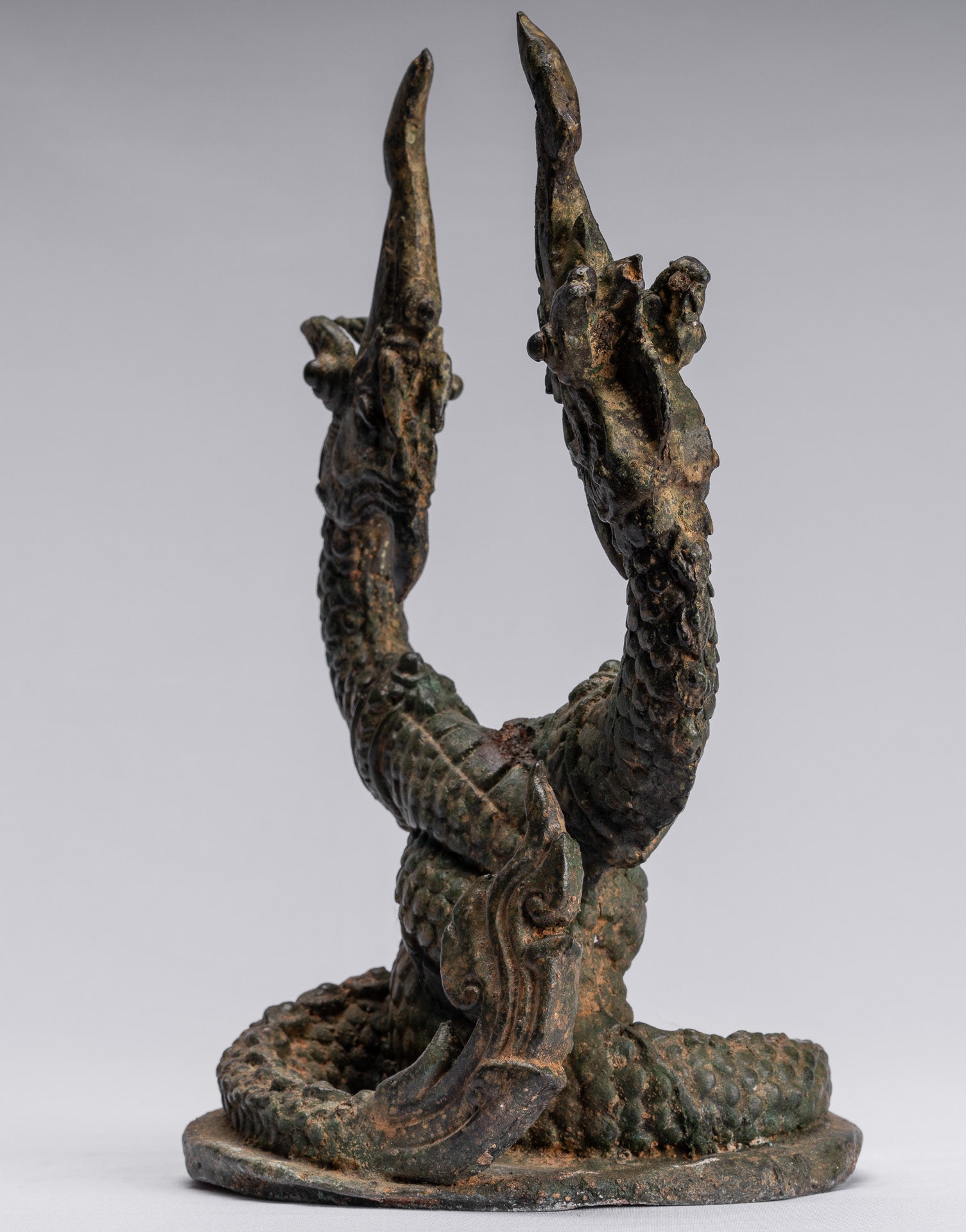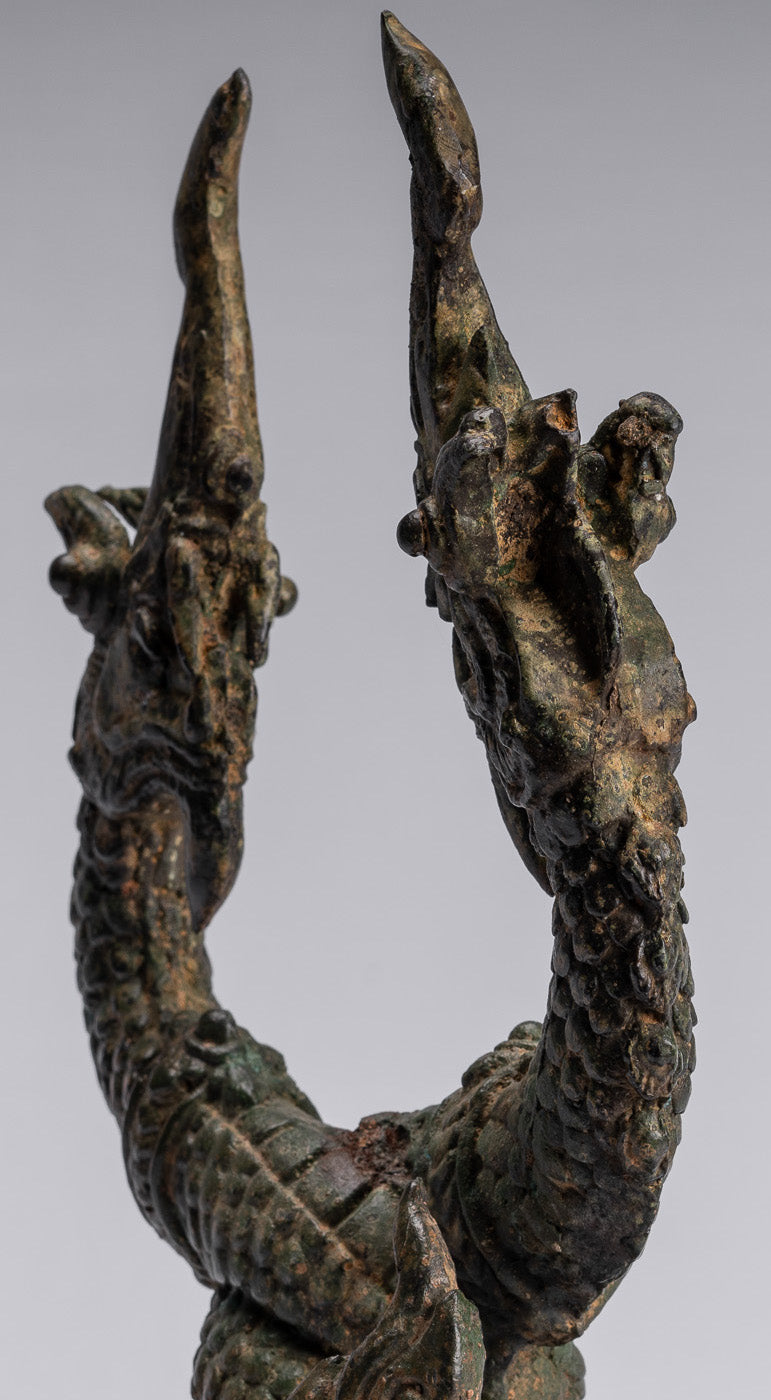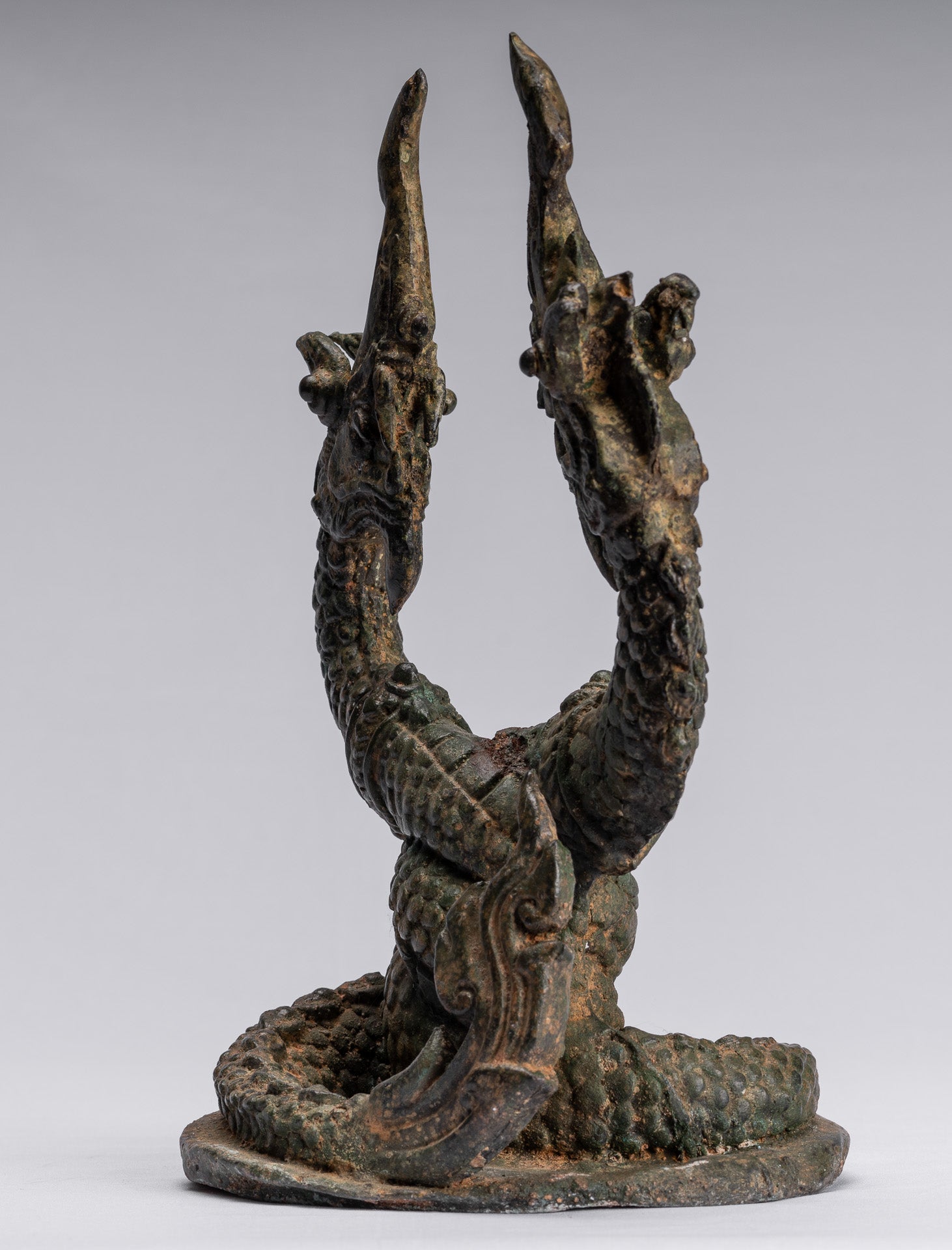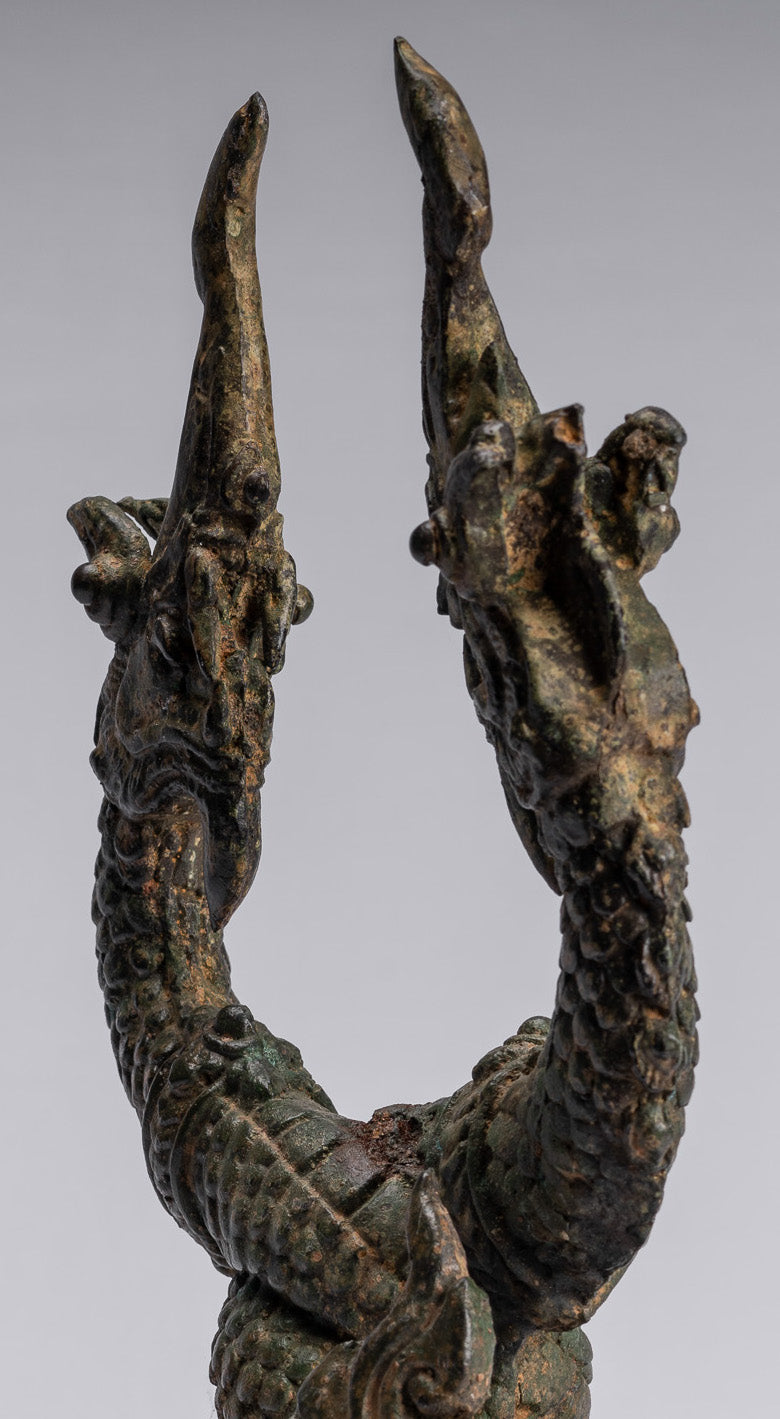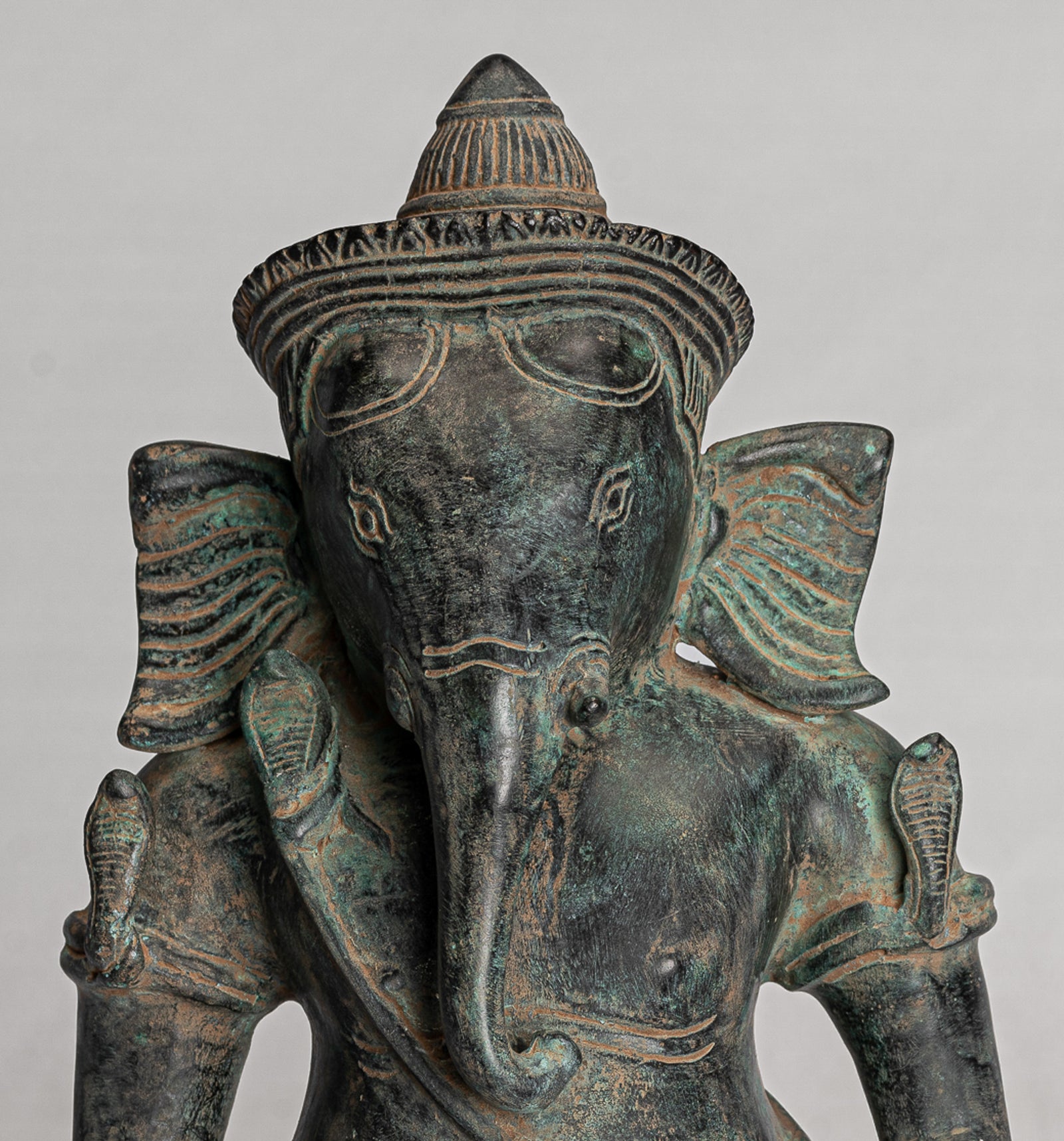-
Antique Thai Style Bronze Two Headed Protective Naga, Snake or Serpent Statue - 30cm/12"
Measures - (Height) 30cm/12"
An antique Thai style protective two-headed Naga, Snake or Serpent from HD Asian Art.
The Naga, a mythical serpent-like creature deeply rooted in Southeast Asian cultures, holds special significance in Thailand. Represented in art, architecture, religion, and folklore, the Naga embodies a complex blend of meanings—from spiritual guardianship to agricultural prosperity.
In Thai culture, the Naga is revered as a divine and protective force, often seen as a bridge between the physical and spiritual worlds.
In Thailand, the Naga is deeply integrated into the local beliefs and practices, merging elements from both Hindu and Buddhist traditions. However, the Thai Naga is more than just a serpent; it is a symbol of water, fertility, protection, and power.
The Naga is believed to live in bodies of water, such as rivers and lakes, particularly the Mekong River, which is central to the spiritual life and livelihood of many people in Thailand and Laos.
The Naga is regarded as a protector of the Buddha and Buddhism in Thailand. Its image is frequently found at the entrances of Buddhist temples (wats), where it serves as a guardian, warding off evil spirits and protecting the sacred space. The Naga’s coiled body and watchful eyes symbolize its vigilance in protecting the Dharma (Buddhist teachings).
One of the most common representations of the Naga in Thai temples is as a multi-headed serpent that lines the balustrades or staircases leading up to the temple. These Naga balustrades are meant to symbolize the Naga’s role as a protector and its power to lead believers from the earthly realm into the sacred and spiritual realm. The belief is that when devotees pass by these multi head Naga, they are spiritually cleansed and protected.
The Naga, as a mythical serpent and divine protector, occupies a central place in Thai spirituality, art, and folklore. From its role as a guardian of Buddhism to its association with fertility, rain, and prosperity, the Naga represents the harmonious interplay of physical and spiritual forces.
It connects Thailand’s past with its present, serving as both a cultural icon and a reminder of the country’s deep connection to water, the land, and the divine.
In temples, festivals, and everyday life, the Naga continues to be an enduring symbol of protection, transformation, and spiritual guidance for the Thai people, ensuring that this ancient serpent's legacy remains alive and well in modern Thailand.
The casting of this piece is lovely as you can see in the fine details of the Naga. Each detail is rendered perfectly. The distinctive patina of the piece is also particularly delightful.
This traditional in appearance piece is sure to add protection to your home, office or sacred space.
SATISFACTION GUARANTEE - We have been offering SE Asian Art for many years and are proud of the reputation we have developed for fair and honest listings. However, if for any reason, whatsoever, you are unhappy with your purchase please just let us know and we will provide a full refund. We want you to be 100% happy with your purchase.
-
The majority of orders will be shipped with DHL. This is a secure, express and fully tracked service.
Items less than 2Kg we typically ship using Royal Mail.
Once we receive your order we try to ship all orders the same or next working day.
Large and/or fragile pieces requiring palletising, specialist crating and/or extra packaging may take a little longer. Palletised shipments will be delivered curbside.
All orders over 35 GBP will be shipped free of charge.

-
We genuinely hope that all purchases delight.
However, if they do not, regardless of reason, we will refund all orders upon receipt of the unwanted item. Just notify us within 14 days of receiving your order that you wish to make a return and send the piece back to us with 30 days of delivery.
The "Churning of the Sea of Milk" statue at Suvarnabhumi Airport is much more than an artistic marvel.
It embodies a timeless narrative of creation, balance, and unity, rooted in Hindu mythology and embraced by Thai culture.


